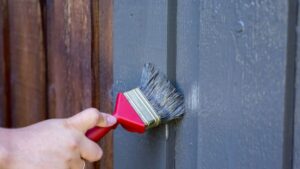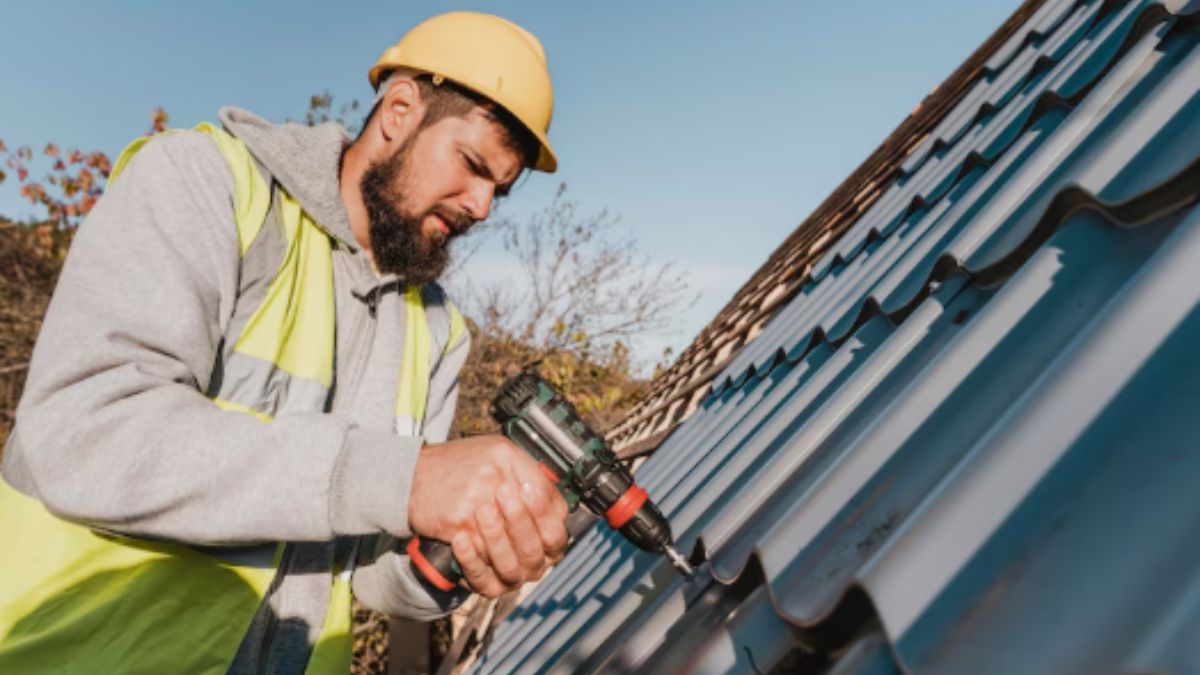Construction
How to Budget for Your Next Home Renovation: Understanding the True Costs

Home renovation projects often excite homeowners but can also lead to financial stress if not properly planned. Knowing how to budget effectively is crucial for ensuring that you can achieve your design goals without going overboard financially. This guide will take you through the necessary steps to accurately budget for your next renovation, including understanding the true costs involved, identifying potential hidden fees, and exploring financing options.

Assessing Your Renovation Goals
Before diving into budgeting, it’s important to clearly define your renovation goals. Are you looking to increase property value, improve functionality, or enhance aesthetics? Differentiating your primary objectives will guide you in allocating your budget appropriately. Prioritize renovations that offer the highest return on investment (ROI). According to some statistics, kitchen remodels recoup about 78% of costs, while bathroom remodels recover around 70%. By focusing on projects that yield substantial returns, you can make informed decisions about where to allocate your resources.
Consider how these goals align with your long-term plans for the home. For example, if you intend to stay in your home long-term, investing in a high-quality renovation may make sense, even if it involves a more significant upfront cost.
Understanding Renovation Costs
To create an accurate budget, it’s important to break down potential renovation costs into several categories. Start by researching the average costs in your area for similar projects. General labor costs, material costs, permits, and design fees can significantly influence your renovation budget. In 2023, the average cost for a full kitchen remodel in the U.S. ranges from $20,000 to $75,000, depending on factors such as location and the scope of the project. Knowing these figures beforehand can set realistic expectations.
Consider any additional costs that may arise. If you’re keen to understand how to finance these unexpected costs, specifically for roofs, you can read more about financing options tailored to renovation projects. Roofing, as well as other renovations, often involve unforeseen circumstances. The National Association of Realtors reports that generally, nearly 25% of homeowners exceed their initial budget due to unexpected expenses. Thus, incorporating a contingency fund—typically around 10%-20% of your total budget—will help in managing these surprises.
Choosing the Right Professionals
Hiring professionals may be necessary, depending on the complexity of your renovation. General contractors, architects, and designers come with their own price tags that should be factored into your budget. Research and seek referrals to find reputable professionals who fit within your financial constraints. Obtaining multiple quotes can help ensure you’re being charged fairly. Engaging professionals may also save you money in the long run. Skilled contractors know the ins and outs of the renovation process and can help mitigate costly errors. Additionally, established contractors often have relationships with suppliers, allowing them to source materials at discounted rates. Evaluating the experience and portfolio of potential hires can further guide your decision.
Financing Your Renovation
Determining how you will finance your renovation is another key aspect of your budgeting process. Homeowners have various options ranging from savings and personal loans to home equity lines of credit and renovation loans specifically designed for home improvements. Each financing method comes with its own set of advantages and drawbacks. Using savings is the simplest method, as it incurs no interest costs; however, it may not cover larger projects entirely. Home equity lines of credit (HELOC) are great for homeowners with available equity, allowing them to borrow against their home’s value, but they can become risky if home values fluctuate. Renovation loans cater specifically to homeowners looking to finance a renovation, often providing favorable terms. Analyzing all options before committing will ensure a smoother financial journey during your renovation.
Timing Your Renovation for Cost Efficiency
The timing of your renovation can significantly affect costs. For instance, contractors may charge more during peak seasons due to high demand. Planning your project during off-peak times, such as late fall or winter, can sometimes lead to lower labor costs.
Purchasing materials during clearance sales or off-season can yield substantial savings. If you’re considering a significant renovation, it’s wise to begin planning at least six months in advance. This allows ample time to research professionals, obtain permits, and secure financing. Creating a detailed timeline for your project can help in keeping track of milestones, and preventing last-minute expenses.
Adhering to Your Budget
Once you have established a budget, adhering to it is essential. Keep track of all expenses against your budget regularly to ensure you’re on course. Communication with your contractor and suppliers can also help keep costs in check. After reviewing your finances, if there are areas where you can cut back, do so before the project kicks off. Maintaining a detailed record of receipts and invoices will also help keep your budget transparent, allowing you to identify discrepancies before they snowball into larger financial issues. Developing your budgeting skills can transform the renovation experience from a financial burden to a rewarding investment.

Understanding all aspects of renovation costs, financing options, and necessary professionals will lead to a fruitful project. With diligent planning and monitoring, you can successfully navigate your next home renovation, turning dreams into reality.
Construction
Why Safety Violations Shouldn’t Be Ignored on Construction Sites

In the high-stakes world of construction, overlooking safety violations can transform a bustling site into a perilous environment where risks lurk at every corner. As a professional in the industry, you understand that adherence to safety regulations is not merely a legal obligation but a moral imperative. Ignoring these standards often leads to severe consequences, including debilitating injuries and fatalities, which could have been prevented. If you’re a victim of negligence due to ignored safety standards, a Baltimore construction accident lawyer can help uncover systemic problems and hold the right parties accountable.
Understanding Common Safety Violations on Construction Sites
Fall Protection Failures
One of the most prevalent safety violations on construction sites involves inadequate fall protection. Given that construction workers often operate at significant heights, the lack of proper guardrails, harnesses, or nets can lead to severe injuries or fatalities. It is crucial to implement and consistently maintain these protections, as they serve as the first line of defense against falls. Ensuring regular inspections and training can significantly mitigate these risks, fostering a safer work environment.
Lack of Proper Protective Equipment
Personal Protective Equipment (PPE) is essential for safeguarding workers against various hazards, yet its absence is a common violation. Hard hats, gloves, goggles, and steel-toed boots are not just recommendations; they are necessities. Employers must provide appropriate PPE and ensure its proper use at all times. By prioritizing PPE, construction sites can drastically reduce the likelihood of injuries related to debris, chemical exposure, and sharp objects.
Electrical Hazards
Electrical safety violations are another critical concern, often arising from exposed wires, improper grounding, or inadequate protective measures around live circuits. These hazards pose significant risks of shocks and burns. To address this, comprehensive electrical safety protocols and training should be implemented, focusing on identifying and neutralizing potential risks proactively. Regular audits and adherence to safety standards can prevent accidents and maintain a secure work environment.
Inadequate Training
A well-trained workforce is vital for preventing accidents and ensuring compliance with safety standards. Unfortunately, insufficient training remains a widespread issue on construction sites. Workers must be educated about the specific risks associated with their tasks and the measures needed to mitigate them. Investing in continuous training programs not only enhances safety but also boosts productivity and morale, creating a culture where safety is a shared responsibility.
The Impact of Ignoring Safety Standards
Increased Risk of Accidents
When safety standards on construction sites are neglected, the likelihood of accidents rises exponentially. Inadequate safety measures can lead to severe injuries, not just for the workers involved but also for anyone present on or near the site. The absence of essential safety protocols can result in falls from great heights, equipment malfunctions, or even structural collapses. These incidents not only endanger lives but can also lead to substantial legal and financial repercussions for those responsible.
Financial Consequences
Ignoring safety violations can have a detrimental financial impact on construction companies. Accidents often result in costly lawsuits and hefty fines imposed by regulatory bodies such as OSHA. Beyond direct financial penalties, the costs of medical care, insurance premium increases, and potential project delays can be staggering. Moreover, the reputational damage from such incidents can lead to a loss of business opportunities, as clients often prefer to associate with companies known for their commitment to safety.
Legal and Ethical Implications
From a legal perspective, failing to adhere to safety standards opens companies up to litigation and can result in criminal charges if negligence is proven. Ethically, companies have a responsibility to protect the well-being of their workers. Ignoring safety protocols undermines this duty, fostering a work environment where employee welfare is compromised. This negligence can lead to a toxic workplace culture, where morale and productivity suffer as workers feel their safety and concerns are not prioritized.
Final Thoughts
In overlooking safety violations on construction sites, you not only jeopardize the immediate well-being of workers but also the long-term integrity of the projects and the reputation of those involved. A Baltimore construction accident lawyer can help bring justice to these situations. As a conscientious professional, addressing these violations promptly is paramount, ensuring compliance with safety regulations and fostering a culture of accountability and care. By prioritizing safety, you contribute to a safer working environment and mitigate potential legal and financial repercussions.
Construction
Tiny Problems, Big Repairs: Roof Issues That Often Go Unnoticed

Roofs are one of the most critical yet overlooked parts of a home. They endure daily exposure to wind, rain, sun, and temperature changes, yet homeowners often pay them little attention until there’s a leak or visible damage. Unfortunately, by the time a problem becomes obvious, it can already require a costly repair. Homeowners who regularly check in with trusted roofing companies Bentonville AR often catch minor concerns before they spiral into full-blown repairs.
Subtle Signs of Trouble
Some roof issues can be hidden in plain sight. For example, slightly lifted shingles might not seem alarming, but they allow moisture to creep beneath the roof’s surface. Over time, this can damage the underlayment and decking and may even lead to mold growth inside the attic.
Another sign that many people overlook is the presence of shingle granules in gutters. These granules protect the asphalt beneath from UV rays. When they start to wear off, the roof becomes more vulnerable to sun damage and water penetration, even if the shingles themselves still appear intact.
In colder seasons, ice dams are another subtle red flag. They form when warm air in the attic melts snow on the roof, which refreezes at the edges. This causes a backup of water that can seep under shingles and into the house.
Flashing Failures
Flashing is a thin material, often made of aluminum or galvanized steel, installed around roof penetrations such as chimneys, skylights, and vents. Its job is to direct water away from these vulnerable areas. But flashing can loosen or rust over time. Small gaps can allow water in, especially during heavy rains or storms, leading to gradual interior water damage that’s easy to miss.
What’s dangerous is how slowly this type of damage develops. Homeowners might not notice anything until brown stains appear on ceilings or walls, by which point the repairs could require drywall replacement or even structural fixes.
Gutter-Related Damage
Clogged or poorly pitched gutters can cause water to pool on or near the roofline. Standing water may slowly seep into the fascia boards or the foundation of the home. When this water has nowhere to go, it also encourages rot and attracts pests, such as termites.
Regular cleaning and inspection of the gutter system are easy ways to protect the home, but it’s another task many people delay. Professional inspections from roofing companies Bentonville AR can catch these problems early, especially after seasonal changes when debris builds up fast.
Ventilation Problems
Roof ventilation might not be something homeowners think about often, but it’s vital to the health of the whole system. Poor ventilation traps moisture and heat inside the attic. Over time, that excess moisture can lead to mold growth and wood rot. Excess heat can cause shingles to age prematurely, compromising the roof’s lifespan.
You don’t need to wait for a major incident to discover ventilation issues. Signs include unusually high energy bills, a musty smell in the attic, or noticeable temperature differences between rooms.
When Pests Move In
Animals and insects can cause significant damage to a roof without being visible. Birds, squirrels, or raccoons may displace or damage shingles while looking for shelter. Wasps or bees can nest in vents or beneath eaves. Even tiny termites or carpenter ants can slowly eat away at wood structures in and around the roof.
Look for chew marks, droppings, or small holes near the roofline. These are subtle signs that it’s time for a closer inspection, preferably by a professional. Reliable roofing companies are trained to spot pest-related roof damage that homeowners may never notice until the problem worsens.
Final Thoughts
Roof damage rarely begins with a dramatic event. More often, it starts with minor, unnoticeable issues that gradually lead to costly consequences. Staying proactive and partnering with professional roofing experts can mean the difference between a simple fix and an expensive overhaul. By trusting experienced teams like those at roofing companies Bentonville AR, homeowners protect not just their roofs, but their entire homes.
Construction
From Scorching Summers to Freezing Temps: How Weather Wears Down Your Roof

Your roof is your home’s first line of defense against the elements, but it takes a beating year-round. In places like Arkansas, where the weather shifts from intense summer heat to icy winter storms, the impact can be especially harsh. Homeowners in Roofing Fayetteville AR areas need to understand how these shifts slowly degrade roofing materials, compromising safety, efficiency, and even property value.
The Heat Factor: Summer Damage Builds Over Time
When the temperature soars, your roof heats up; sometimes to well over 150 degrees Fahrenheit. Shingles can become brittle, warp, or even crack under constant sun exposure. Prolonged UV radiation also deteriorates roofing materials, particularly asphalt shingles, causing them to lose their protective oils. Once that happens, the shingles start to curl or break off entirely.
And it’s not just the surface that suffers. Attics without proper ventilation trap heat, increasing the temperature inside your home and putting extra strain on your HVAC system. Over time, this can warp the wood underneath your roof and reduce its structural integrity. Moisture that’s supposed to escape may get trapped, leading to hidden mold or rot.
Winter’s Wrath: Cold Weather Consequences
Cold snaps are just as brutal in a different way. Ice and snow might look harmless, but when they melt and refreeze, they form ice dams along the edges of your roof. These dams block drainage and force water back up under your shingles. The result? Leaks, mold, and interior water damage.
Thermal cycling, which involves repeated freezing and thawing, also plays a destructive role. As water seeps into small cracks and freezes, it expands. That expansion widens gaps and causes more severe cracks over time. This gradual breakdown can be hard to spot until it becomes a major repair issue.
Storms and Wind: Sudden but Serious Impact
While gradual damage is a concern, Arkansas is no stranger to violent storms and wind events. Shingles can be torn away by gusty winds, especially if they’ve already been weakened by heat or cold. Flying debris, hail, and torrential rain also add stress to your roof system. Even a single storm can loosen flashing, clog gutters, or dislodge tiles.
High winds can also dislodge shingles, creating gaps that allow water to infiltrate. This can lead to long-term moisture damage to the underlayment and the roof deck beneath. According to the National Weather Service, even moderate wind speeds can cause roof damage if the materials are already compromised.
Humidity and Mold: The Hidden Dangers
Arkansas summers aren’t just hot; they’re humid. Excess humidity can create a breeding ground for mold and mildew in poorly ventilated roof spaces. Over time, this not only affects your roof’s structure but can also impact your indoor air quality.
Mold spores can spread to ceilings and walls, creating potential health hazards for your family. Prolonged exposure to a damp environment may also lead to wood rot, which weakens the roof’s support system and accelerates its overall decline.
Preventive Maintenance: A Roof’s Best Ally
You can’t control the weather, but you can control how prepared your roof is to face it. Routine inspections, ideally conducted twice a year in the spring and fall, can identify minor issues before they escalate into major problems. Look for missing or curled shingles, sagging areas, clogged gutters, or signs of mold. These warning signs are often subtle but can save thousands in repairs if caught early.
Regular maintenance isn’t just about spotting damage; it’s also about preserving the integrity of your investment. A well-maintained roof can last up to 25 years or more, depending on the materials used and local weather conditions. A neglected one might only last half that time.
When to Call a Professional
Not all roofing damage is visible from the ground. Professional inspections often include thermal imaging, moisture detection, and a full assessment of flashing and underlayment. If you live in or near Roofing Fayetteville AR, having a licensed roofer evaluate your home after seasonal shifts is a smart move.
Professionals can provide repairs that extend the life of your roof, offer insight into better insulation or ventilation systems, and help prevent future weather-related issues. The Federal Emergency Management Agency (FEMA) even recommends hiring trained professionals after storms to ensure structural safety and compliance with local building codes.
Conclusion
The weather in Arkansas is particularly harsh on roofs, whether it’s the searing heat of summer, the cold of winter, or sudden, violent storms. Understanding the gradual and sudden damage that weather can cause is the first step toward protecting your home. With smart maintenance and timely professional help, homeowners in Roofing Fayetteville AR regions can keep their roofs resilient and their families safe through every season.

 Cartoon5 months ago
Cartoon5 months agoUnlocking the Potential of Nekopoi.care: A Comprehensive Guide

 Game2 years ago
Game2 years agoExploring Aopickleballthietke.com: Your Ultimate Pickleball Destination

 BUSINESS2 years ago
BUSINESS2 years agoUnraveling the Mystery of 405 Howard Street San Francisco charge on Credit Card

 BUSINESS5 months ago
BUSINESS5 months agoWhat Companies Are In The Consumer Services Field

 HOME IMPROVEMENT2 years ago
HOME IMPROVEMENT2 years agoVtrahe vs. Other Platforms: Which One Reigns Supreme?

 ENTERTAINMENT1 year ago
ENTERTAINMENT1 year agoUnderstanding Bunkr Album: A Comprehensive Guide

 ENTERTAINMENT2 years ago
ENTERTAINMENT2 years agoThe Ultimate Guide to MP3Juices: Free Music Download

 TECHNOLOGY2 years ago
TECHNOLOGY2 years agoThe Guide to Using Anon Vault for Secure Data Storage
















